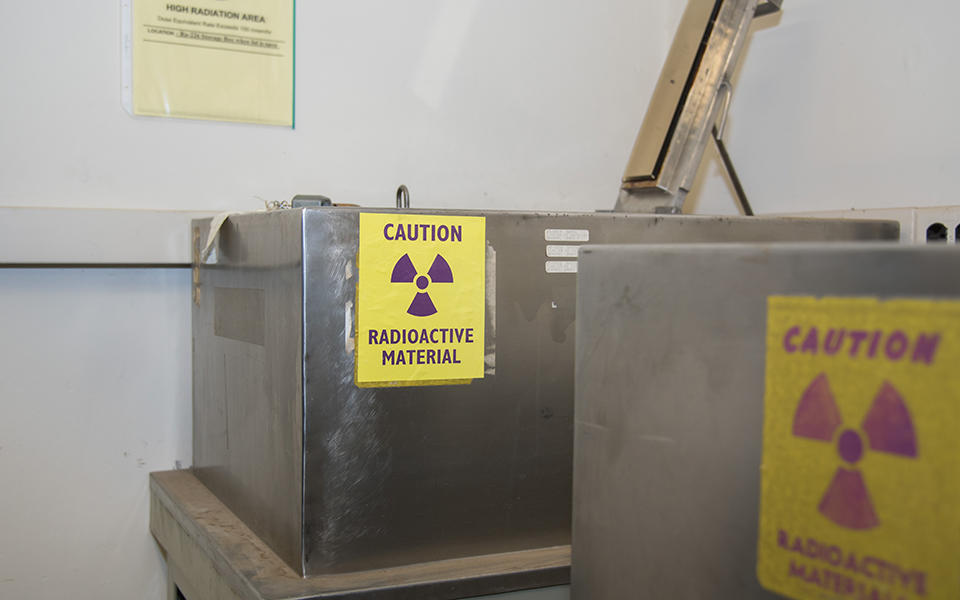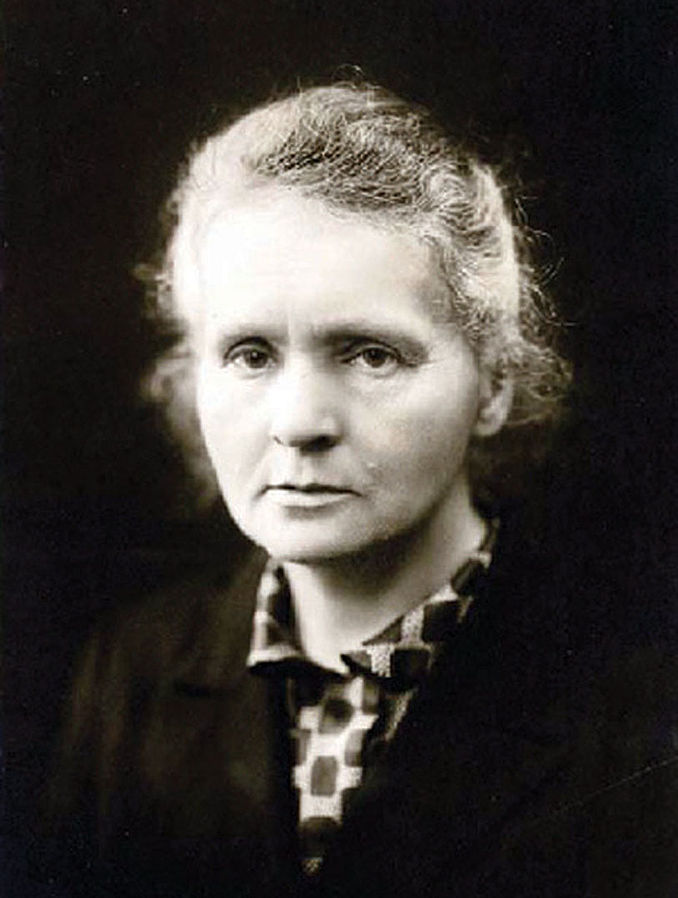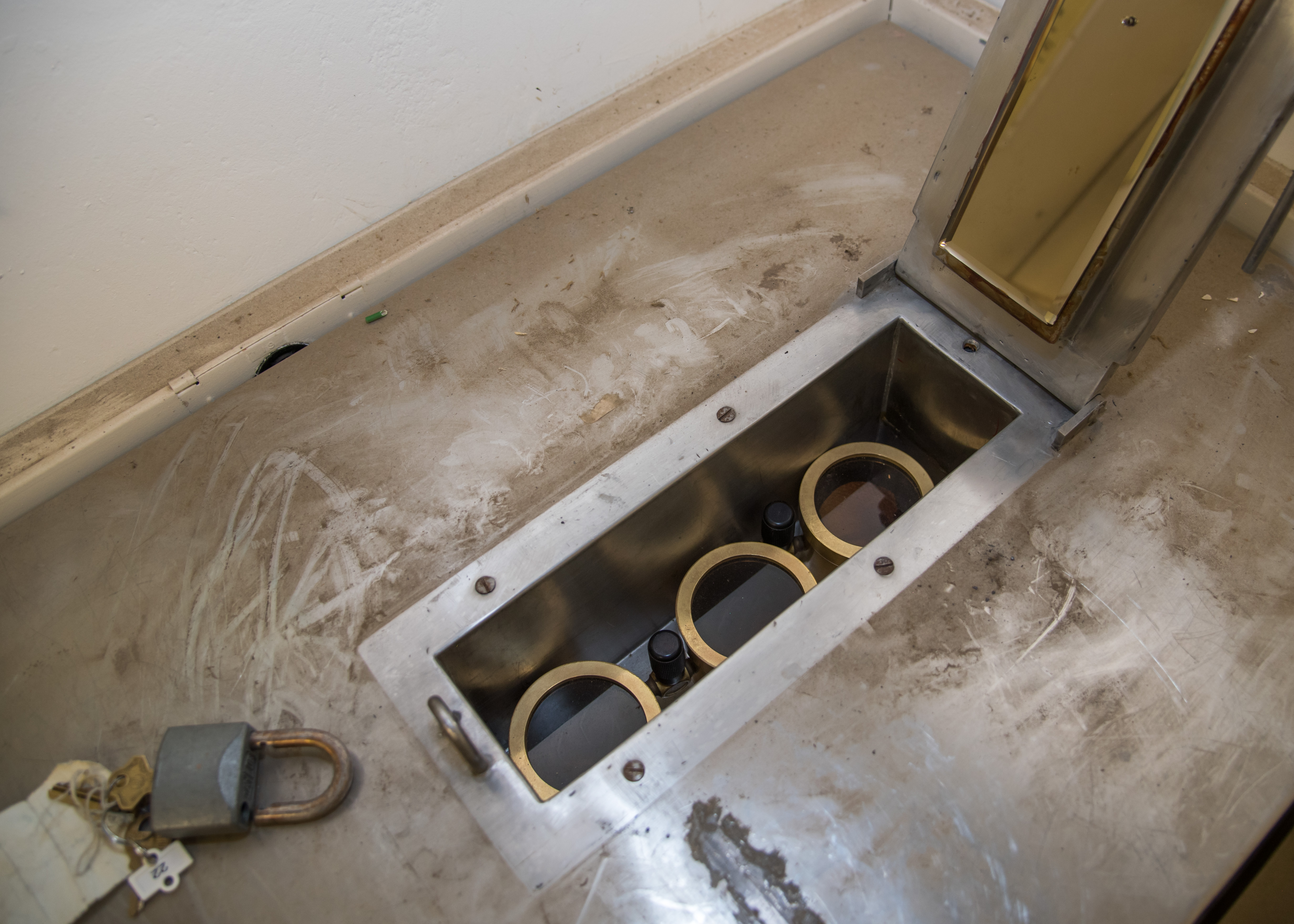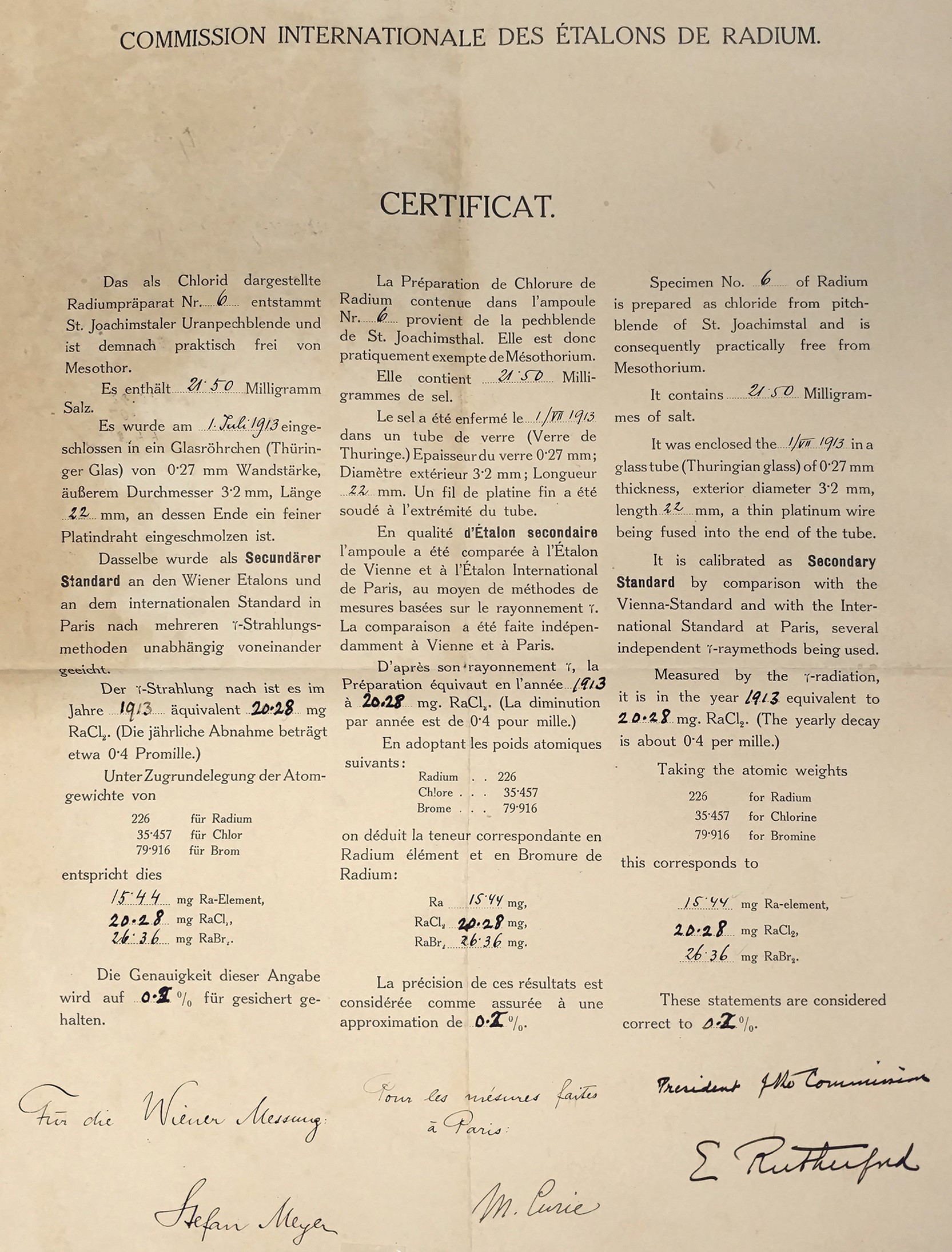Taking Measure
Just a Standard Blog

Down a hall, a staircase, another hall, through two doors and a chain-link gate sits what looks like a steel bathtub. It’s the final resting place of the last known Curie radium standards, lovingly—and safely—preserved by NIST.
Marie Curie is perhaps the most famous woman of 20th-century science. Major motion pictures and best-selling biographies have chronicled her discovery of the radioactive elements polonium and radium, for which she shared the Nobel Prize in physics in 1903 and then received a second Nobel Prize, this time in chemistry, in 1911. Very little note, however, has been made of her leadership role in the development of radioactivity standards.
None of NIST’s recorded histories mentions Marie Curie, which I find a strange oversight. I came to NIST in 1972 and worked for 15 years in the Radioactivity Group, which maintains the national standards for radioactivity, including the standard for radium in solutions. In 1988, I took over the Dosimetry Group, which maintains national standards for radiation doses from sources including radium. Searching through my new laboratories, I found a framed 1921 photograph of Marie Curie from The Pittsburgh Sun on top of an old file cabinet and started to wonder: What was her connection to NIST, and why did my predecessors save this photograph?

In 1910, she was asked by her peers to prepare the world’s first radium standard: a glass ampoule containing 21.99 milligrams of radium chloride, whose mass and radioactivity had been carefully measured. She agreed, on the advice of Nobel laureate Ernest Rutherford, that this international standard would not be kept in her Paris laboratory, but would instead be stored at the International Bureau of Weights and Measures in Sèvres in the Paris suburbs. Scientists urgently needed such standards to support their studies of radioactivity, so the Czech/Austrian chemist Otto Hönigschmid was asked to prepare a set of seven secondary standards. Marie Curie calibrated these secondary standards against her primary standard. In December 1913, Secondary Standard No. 6, containing 20.28 milligrams of radium chloride, was delivered to the National Bureau of Standards, now known as the National Institute of Standards and Technology (NIST).
In 2015, NIST made a decision to dispose of these three standards as hazardous radioactive waste. Nearly 30 years later, I finally have some idea of how Marie Curie worked with our scientists as part of her leadership role in international radiation measurements and standards. And not a moment too soon! Essentially all of the radioactivity standards that she calibrated, including that first international (Paris) standard, have been disposed of as radioactive waste. However, Secondary Standard No. 6, which was made for the United States, is safely stored in a lead enclosure on our Gaithersburg, Maryland, campus along with two other international radium standards that we received in 1937. The certificates for these later sources were signed by Curie’s daughter, Irène Joliot-Curie, who took her mother’s place on the International Radium Standards Commission.

As I reflect on the situation, a few questions still linger in my mind. First, what importance did Marie Curie place on this one standard in the United States? Would she be amused or dismayed that this was the last Curie standard in existence? Also, what value do the three "Curie standards" in NIST's possession have that would preclude their destruction?
Marie Curie first visited the U.S. in May of 1921 on a mission to collect a gram of radium that had been donated to her by the women of the United States. She and her two daughters made a whirlwind tour of cities on the East Coast as she collected honorary degrees from several universities. During her visit to Washington, D.C., she met with President Warren Harding at the White House and received a certificate for the gram of radium and a ceremonial box for the radium. But the radium itself was contained in ten 100-milligram ampoules that had been prepared in Pittsburgh by the Standard Chemical Company and were, at the time of her visit, at NIST being calibrated by comparison with Secondary Standard No. 6.

As to the fate of these last “Curie standards,” my NIST colleague Ronald Collé and I published an article in the Bulletin of the International Radiation Physics Society (PDF) this past autumn in which we asked the international scientific community to offer reasons why these sources should not be destroyed. If these artifacts were normal objects, like the platinum-iridium kilograms from a century ago, it would be no problem to display them. But their hazardous nature dictates that they be handled with great care and stored in lead enclosures, making casual viewing significantly more complicated.
The organizing committee for her visit to Washington included Professor Samuel Wesley Stratton, our first director. On at least one morning during her days in Washington, Stratton hosted her at our original campus on Connecticut Avenue, where she examined the radium ampoules and discussed NIST’s gold-leaf electroscope measurement of the radium to assure herself that she was getting a full gram of the precious element. Her meetings with Stratton, and the follow-on visit she had with the chemists who separated the radium in Pittsburgh, were certainly the technical highlights of her visit to the U.S.
Frankly, I don’t know the answer. These standards are certainly important to the history of science, and I would like to see them preserved for posterity. We are looking forward to getting ideas from our colleagues on how we might save the last of the Curie standards from being swept into the dustbin of history.
About the author
Related Posts
Comments
- Reply
Interesting there is still some Radium belonging to her. I wonder given the rate of gas production if there would be an increase of pressure on the ampules? I know PuNo3 produces gas and its containers need occasional venting. I'm thinking opening those ampules would decrease their historical value. Public display, no matter how you shielded it, would not be allowed. So back to the Radium solution is it acidic or basic? I'm thinking if its basic there will not be any hydrolyzing therefore no gas production? I'm wondering what the dose rate is? The only comparison I can make as far as something of equal interest is the Plutonium sample produced by Seaborg, Segre', McMillian.
Hi Don, Good point about the gas build up due to hydrolysis in acidic solutions of alpha-particle emitters. This is indeed a problem for sealed liquid sources. We have made calculations and taken steps to ensure safe storage of solution sources. Fortunately, the three sealed sources from the International Radium Standards Commission are sealed glass ampoules of radium chloride. Calculations do not indicate a build up of gases, but the ampoules are so fragile that they are stored in special containers to guard against any possible loss of radon.
Dear Dr. Coursey,
With great interest I read your beautifully written article and all questions and answers. I guess not many people think we should "throw away" this precious No. 6 Standard Sample prepared (or certified) by one of the greatest scientists, Madame Curie. Moreover, the sample is the only sample left. We should retain it to pay our respect to her. I like the idea to make dummy ampoules for display with some visual means.
Thank you for your suggestions. We are working to design a display here at NIST to showcase the early radium workers, and this will include photos and artifacts from the time of Marie Curie's visit to NIST in May 100 years ago. It is planned to include this information also on a permanent NIST History website. Five years after alerting the international community about the Marie Curie standards, we have still not had contact with an institution that could responsibly take possession of the sources. The most likely fate of the aged radium-226 is that it will be irradiated in a reactor to form a new element, radium-223, for use in cancer therapy. Marie Curie would probably applaud this solution.





